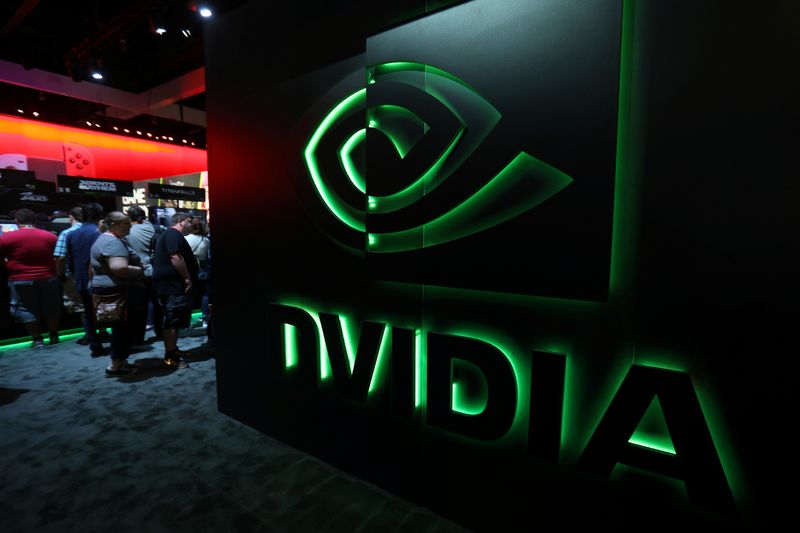By Ayanti Bera and Stephen Nellis
(Reuters) - Nvidia Corp (O:NVDA) on Thursday forecast second-quarter revenue above analysts' estimates, as demand surges for its chips used in the data centers that power the shift to working remotely because of the new coronavirus outbreak.
The company said the forecast includes a contribution from its $6.9 billion purchase of Israeli chip firm Mellanox (NASDAQ:MLNX) Technologies Ltd, which strengthened its data center business.
The chipmaker said it expects current quarter revenue of $3.65 billion, plus or minus 2%, while analysts on average were expecting $3.29 billion, according to IBES data from Refinitiv.
Shares rose 0.4% in after-hours trading after the results were announced.
Much like rivals Intel Corp (O:INTC) and Advanced Micro Devices Inc (O:AMD), Nvidia recorded a jump in demand for data center chips as companies invested to strengthen their IT infrastructure to support employees working remotely. Nvidia also said that sales to cloud computing companies drove its data center results.
Revenue rose 39% to $3.08 billion in the first quarter ended April 26, with the data center business recording its first $1 billion quarter, the company said. Nvidia's data center business hit $1.14 billion, up 80 percent from a year earlier. The segment beat analyst estimates of $1.07 billion, according to Refinitiv data.
Nvidia's data center chips power functions such as search suggestions, product recommendations and artificial intelligence work such as speech and image recognition.
But some of Nvidia's market segments were hurt by the pandemic. The company expects sales to automotive customers to fall 40% next quarter. But Nvidia CEO Jensen Huang said in an interview that some of those companies were also investing in robotics for the future, with Nvidia supplying the chips.
"The manufacturing companies are impacted, but they're racing to work on robotics technology so they can be less impacted in the future," Huang told Reuters.

Nvidia's net income rose to $917 million, or $1.47 per share, from $394 million, or 64 cents per share, a year earlier.